How to make the best and Easy ZZ plant soil mix recipe
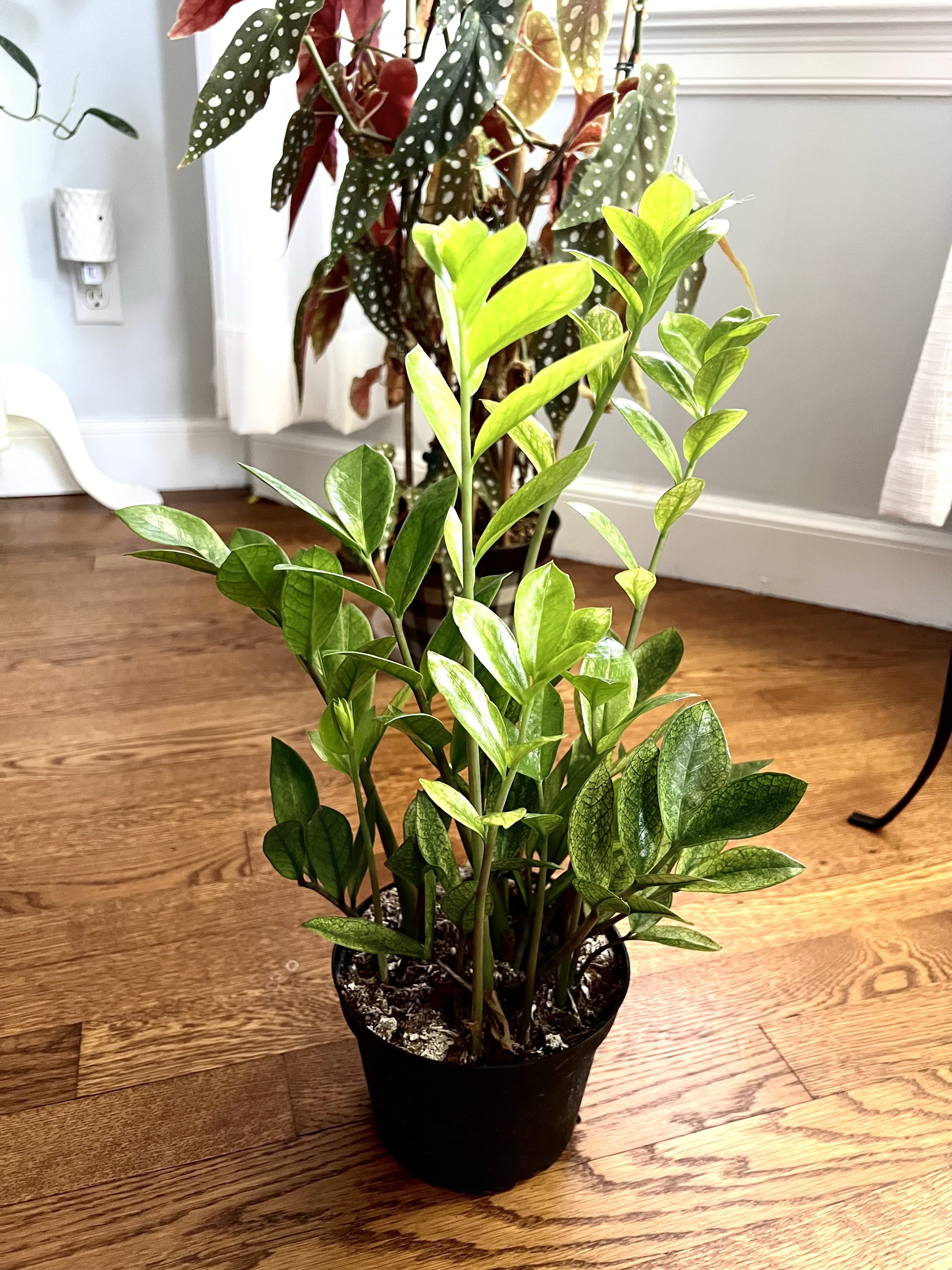
The ZZ plant, also known as Zamioculcas zamiifolia, is a popular houseplant known for its tolerance of low light and infrequent watering. It is native to eastern Africa, where it grows in grasslands, along riverbanks, and in dry forests. The plant was first introduced to the horticultural trade in the 1990s, and it quickly became a popular choice for houseplants and office plants. We will teach you what you need to know in order to grow a healthy plant. The most important information we will teach you is our ZZ Plant soil mix recipe! Its easy and can be used for many plants in your collection!
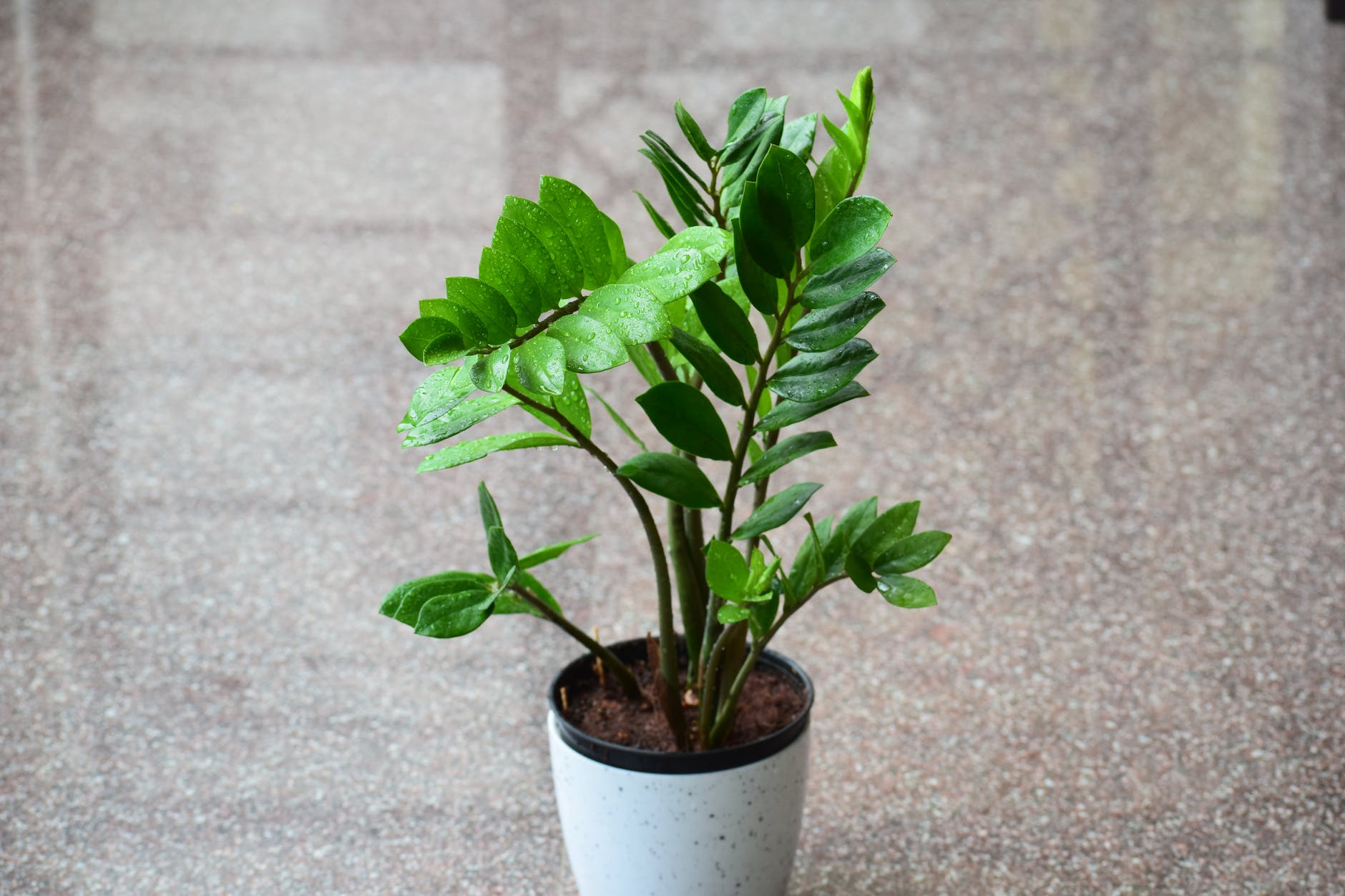
The ZZ plant is a member of the Araceae family, which also includes peace lilies and anthuriums.
It is a slow grower that can reach up to 4 feet tall indoors. The plant has glossy, dark green leaves that are divided into leaflets. The leaves are the most attractive part of the plant, and they can be used to create a variety of arrangements.
The ZZ plant is a very easy plant to care for. It can tolerate low light, and it only needs to be watered every few weeks. The plant is also very drought tolerant, and it can survive for several weeks without water. The ZZ plant is a great choice for people who are new to houseplants, or for people who travel frequently.
Here are some of the benefits of growing a ZZ plant:
- Easy to care for: The ZZ plant is a very low-maintenance plant that can tolerate a wide range of conditions.
- Tolerates low light: The ZZ plant can thrive in low-light conditions, making it a great choice for homes and offices with limited natural light.
- Drought tolerant: The ZZ plant can store water in its rhizomes, allowing it to survive for several weeks without water.
- Air purifier: The ZZ plant is a known air purifier, and it can help to remove toxins from the air.
- Long-lived: The ZZ plant can live for many years with proper care.
The Best ZZ Plant Soil Mix Recipe
This ZZ plant soil mix recipe will be airy and offer good drainage to prevent root rot.
For best results try this perfect soil mix for your ZZ plants and any other plants that need sharp drainage.
Ingredients:
- 2 parts coco coir or peat moss
- 1 part perlite
- 1 part organic materials like worm castings
- 1/2 part orchid bark
- 1 part cactus mix
Instructions:
- Mix your ingredients together in a large container.
- Moisten the mix until it is evenly damp but not soggy.
- Pot up your ZZ plant in the new soil mix.
Your ZZ plant will thrive in this well-draining soil mixture. Be sure to water it only when the top 2-3 inches of soil is dry to the touch.
Here are the top 5 ZZ plant varieties to grow:
- Zamioculcas zamiifolia ‘Raven’: (Raven zz plant) This variety is known for its deep, almost black, leaves. It is a slow-growing plant that can reach up to 3 feet tall indoors.
- Zamioculcas zamiifolia ‘Zenzi’: This variety is a compact plant that can reach up to 1.5 feet tall indoors. It has smaller, more rounded leaves than the standard ZZ plant.
- Zamioculcas zamiifolia ‘Lucky Classic’: This variety is the most common type of ZZ plant. It has glossy, dark green leaves that can reach up to 4 feet tall indoors.
- Zamioculcas zamiifolia ‘Zamicro’: This variety is a miniature ZZ plant that can reach up to 1 foot tall indoors. It has very small, delicate leaves.
- Zamioculcas zamiifolia ‘Variegata’: This variety has leaves that are variegated with white or yellow. It is a rarer and more expensive variety of ZZ plant.
These are just a few of the many varieties of ZZ plants that are available. With so many different varieties to choose from, you are sure to find a ZZ plant that is perfect for your home.
Here are a few posts you may be interested in:
- Top 20 houseplants with variegated leaves
- Philodendron Gloriosum Care Guide
- Best Fertilizer for Anthurium Care Guide
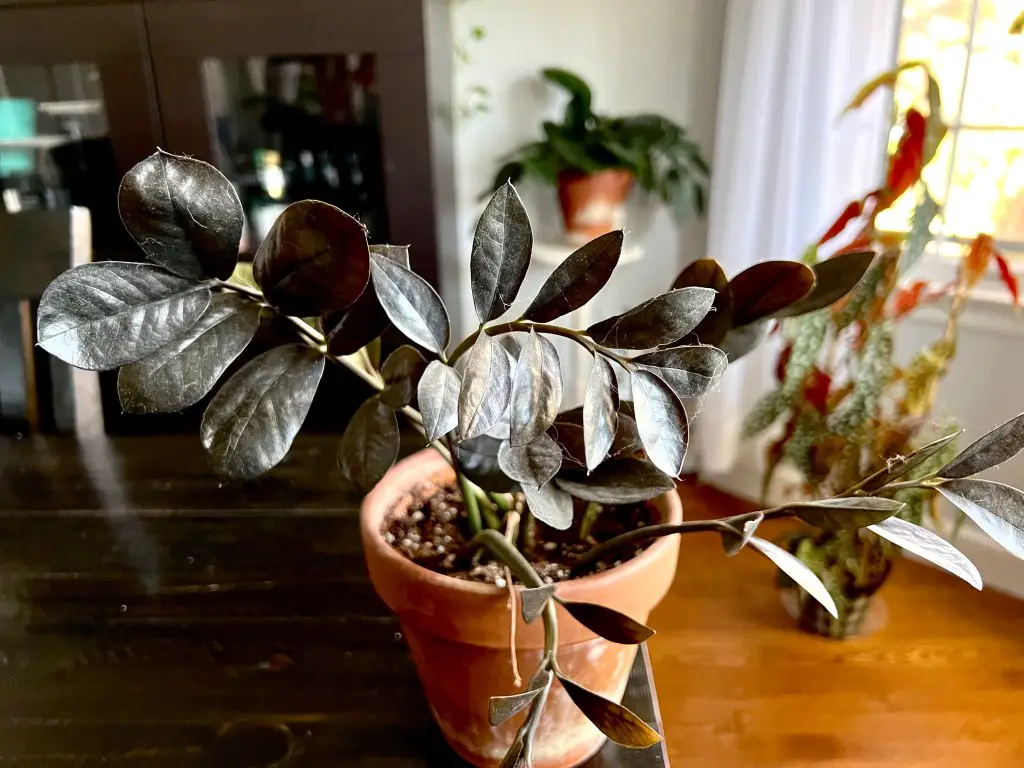
Quick n Fast guide to grow the ZZ Plant
Choosing a new Pot
Select a pot size that is slightly larger than the root ball of your ZZ plant. This allows for adequate root growth without creating too much excess space that could lead to overwatering. Ensure the pot has drainage holes to prevent waterlogging.
Potting Mix and Repotting
The type of soil is very important for ZZ plants so choose or make a well-draining potting mix specifically designed for indoor plants or succulents. This will provide proper aeration and drainage, preventing root rot. Repot your ZZ plant every two to three years or when it outgrows its current pot.
Light Requirements
ZZ plants are tolerant of low light conditions but thrive in bright indirect light. Avoid direct sunlight, which can scorch the leaves. Place your ZZ plant near an east- or north-facing window for optimal lighting.
They prefer bright indirect light, which helps maintain their vibrant foliage and promotes optimal growth.
Here’s a breakdown of ZZ plant light requirements:
- Bright Indirect Light: This is their ideal lighting condition, typically found near east- or north-facing windows. The gentle, diffused light allows them to photosynthesize effectively without the risk of leaf scorch.
- Low Light: ZZ plants can tolerate low-light conditions, making them suitable for rooms with limited natural light. However, extended periods of low light can cause them to grow leggy or produce fewer leaves.
- Fluorescent Lights: ZZ plants can thrive under fluorescent lights, making them a popular choice for office or commercial spaces. The consistent, artificial light provides them with the necessary energy for growth.
- Direct Sunlight: While ZZ plants can tolerate some direct sunlight, prolonged exposure can scorch or damage their leaves. It’s best to avoid placing them in direct sunlight, especially during the hottest parts of the day.
Remember, ZZ plants are adaptable to various lighting conditions. If you can’t provide bright indirect light, they can still survive and grow in low-light environments. However, providing them with adequate light will ensure they remain healthy and vibrant.
Watering
ZZ plants are drought-tolerant and prefer their soil to dry out slightly between watering’s. Allow the top 2-3 inches or more of soil to dry out completely before watering thoroughly. Avoid overwatering, as this can lead to root rot.
Known for their drought tolerance and ability to store water in their rhizomes, this makes them relatively low-maintenance plants when it comes to watering. However, it’s crucial to water them appropriately to prevent overwatering or underwatering, both of which can harm the plant.
Here’s a general guideline for watering ZZ plants:
Watering Frequency:
- During the Spring and Summer (Active Growth Period): Water your ZZ plant every 2-3 weeks, allowing the top inch of soil to dry out completely between watering’s.
- During the Fall and Winter (Dormancy Period): Reduce watering frequency to once a month or less, as the plant’s growth slows down during this time.
Signs of Overwatering:
- Yellowing or drooping leaves
- Soft or mushy leaves
- Root rot
- Stunted growth
Signs of Underwatering:
- Dry, wrinkled leaves
- Wilting or drooping leaves
- Slow growth
Watering Tips:
- Use room temperature water to avoid shocking the plant.
- Water thoroughly until water runs out of the drainage holes.
- Avoid overwatering, as it is the most common cause of ZZ plant problems.
- Allow the excess water to drain completely before placing the pot back in its saucer.
- If you’re unsure whether to water, err on the side of underwatering. It’s always easier to revive an underwatered plant than to treat an overwatered one.
Remember, ZZ plants are more tolerant of under watering than overwatering. It’s better to underwater slightly than to overwater and risk root rot. Let the soil dry out between watering’s, and your ZZ plant will thrive.
Temperature and Humidity
ZZ plants prefer warm temperatures between 65-75°F (18-24°C). They can tolerate moderate humidity levels but don’t require misting. Avoid placing them near drafts or excessive heat sources.
ZZ plants are known for their adaptability to various conditions, including temperature and humidity. They prefer warm temperatures between 65-75°F (18-24°C), which are typically found in most homes and offices. However, they can tolerate temperatures as low as 50°F (10°C) and as high as 85°F (29°C) for short periods.
In terms of humidity, ZZ plants are relatively low-maintenance. They don’t require high humidity levels and can thrive in average household humidity, which is typically around 40-50%. However, if you live in a particularly dry climate, you can increase the humidity around your ZZ plant by placing it on a pebble tray filled with water or misting the leaves occasionally.
The ideal temperature and humidity range for ZZ plants:
Temperature:
- Ideal: 65-75°F (18-24°C)
- Tolerable: 50-85°F (10-29°C)
Humidity:
- Ideal: 40-50%
- Tolerable: Average household humidity (around 30-60%)
The best way to measure the temperature and humidity in your home is with a Hygrometer. Remember, ZZ plants are adaptable and can tolerate a range of conditions. If you provide them with a comfortable temperature range and average household humidity, they will thrive and bring a touch of greenery to your indoor space.
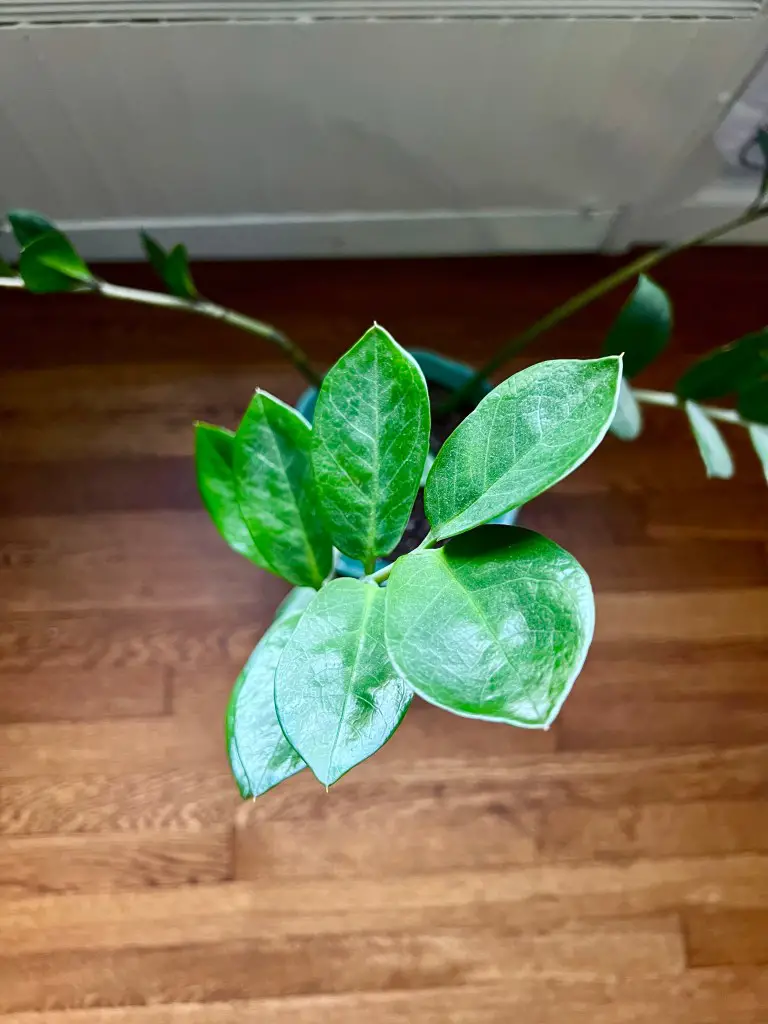
How to Fertilize a ZZ Plant
ZZ plants don’t require heavy fertilization. Apply a balanced liquid fertilizer diluted to half strength during the spring and summer growing season. Avoid over fertilizing, as this can damage the roots.
ZZ plants are relatively low-maintenance plants and don’t require heavy fertilization. However, a balanced liquid fertilizer diluted to half strength during the spring and summer growing season can help promote healthy growth and lush foliage.
Here are some specific fertilizer options that are well-suited for ZZ plants:
- Miracle-Gro Indoor Plant Food: This balanced liquid fertilizer has an NPK ratio of 24-8-16, providing essential nutrients for indoor plants, including ZZ plants.
- Espoma Indoor Liquid Plant Food: This organic liquid fertilizer is specifically formulated for indoor plants, including ZZ plants. It’s gentle and promotes steady growth without the risk of over-fertilization.
- Jobes Organics Indoor Plant Granules: These slow-release granular fertilizers provide a steady nutrient supply over an extended period, making them convenient for ZZ plants.
- Superthrive Plant Food: This concentrated liquid fertilizer is highly effective in promoting root growth and overall plant health. Dilute it to half strength for use on ZZ plants.
- Monterey Plant Food: This balanced liquid fertilizer has an NPK ratio of 20-20-20, providing a well-rounded nutrient mix for ZZ plants.
Remember to always follow the instructions on the fertilizer label for proper dilution and application rates. Over fertilizing can damage your ZZ plant’s roots and foliage.
Cleaning the Leaves
Wipe the leaves of your ZZ plant with a damp cloth to remove dust and debris. This helps maintain their glossy appearance and promotes photosynthesis.
How to Propagate a ZZ Plant
ZZ plants can be propagated through division or stem cuttings. For division, carefully separate sections of the rhizome (underground stems) during repotting and plant them in individual pots. For stem cuttings, take a healthy stem cutting with several leaves and root it in water or a well-draining potting mix.
ZZ plants are easy to propagate, and you can do it using either stem cuttings or leaf cuttings.
Here are step-by-step guides for both methods:
Propagating ZZ Plants with Stem Cuttings:
Select a Healthy Stem: Choose a healthy stem from the mother plant, preferably one with several leaves. The stem should be firm and free of any signs of pests or diseases.
- Make a Clean Cut: Use a sharp, sterilized knife or pruning shears to cut a section of the stem about 3-4 inches long. Make a clean, straight cut just below a node (the point where a leaf or branch grows from the stem).
- Allow the Cutting to Callous: Place the cut end of the stem in a dry, shaded location and allow it to callous over for a few days. This will help prevent rot and encourage root development.
- Root in Water or Soil: You can root the callous stem in either water or soil. To root in water, fill a glass or jar with clean water and place the cut end of the stem in the water. Change the water every few days to prevent stagnation.
- Transplanting Rooted Cuttings: Once the roots have grown to about 1-2 inches long, you can transplant the rooted cutting into a pot filled with well-draining potting mix. Water the newly potted cutting thoroughly and place it in a warm, bright location with indirect light.
Propagating ZZ Plants with Leaf Cuttings:
- Select Healthy Leaves: Choose healthy, mature leaves from the mother plant. It’s best to use leaves that are attached to a small portion of the stem (petiole).
- Remove the Leaves: Carefully remove the leaves from the mother plant, ensuring you get a small portion of the stem attached.
- Allow the Cuttings to Callous: Place the cut ends of the leaf cuttings in a dry, shaded location and allow them to callous over for a few days. This will help prevent rot and encourage root development.
- Root in Soil: Fill a shallow pot or tray with a cactus soil mix or you can make your own diy mix above. Place the callous ends of the leaf cuttings on top of the soil, ensuring the cut ends are not buried. Mist the soil lightly to moisten it.
- Maintain Humidity: Cover the pot or tray with a clear plastic bag to create a humid microclimate. Keep the soil moist but not soggy.
- Transplanting Rooted Cuttings: Once the leaf cuttings have developed roots and new leaflets, you can transplant them into individual pots filled with well-draining potting mix. Water the newly potted cuttings thoroughly and place them in a warm, bright location with indirect light.
Remember to be patient with the propagation process. It may take several weeks to months for roots to develop and new growth to emerge. As long as the cutting is still healthy and alive then keep waiting.
Common ZZ Plant Pests and Diseases
ZZ plants are generally low-maintenance and easy to care for, but they can experience certain problems if not provided with the appropriate conditions.
Here are some of the common ZZ plant issues and their solutions:
- Yellowing Leaves: Yellowing leaves are a common sign of over watering, which can lead to root rot. Allow the soil to dry out completely between watering’s and ensure the pot has drainage holes.
- Drooping Leaves: Drooping leaves can indicate under watering or lack of light. Water the plant thoroughly when the top inch of soil is dry, and ensure it receives adequate bright indirect light.
- Brown or Mushy Leaves: Brown or mushy leaves are a sign of root rot, typically caused by overwatering. Reduce watering frequency and repot the plant in fresh, well-draining potting mix if necessary.
- Pests: ZZ plants can be susceptible to pests like spider mites, mealybugs, and scale insects. Inspect the plant regularly for signs of pests, and treat them with insecticidal soap or neem oil if necessary.
- Slow Growth: Slow growth can be caused by low light, infrequent fertilization, or root-bound conditions. Provide adequate bright indirect light, fertilize during the spring and summer, and repot the plant if it becomes root-bound.
- Leaf Spots: Leaf spots can be caused by fungal or bacterial diseases, often due to overwatering or poor air circulation. Improve air circulation, reduce watering frequency, and remove affected leaves if necessary.
To prevent these issues, it’s essential to follow proper ZZ plant care guidelines, including:
- Watering only when the soil is dry to the touch
- Providing bright indirect light
- Using a well-draining potting mix
- Repotting when the plant becomes root-bound
- Fertilizing during the spring and summer
- Inspecting the plant regularly for signs of pests or diseases
- Maintaining proper humidity levels
The ZZ Plant soil mix recipe is one of the keys to keeping your zz plant happy makes a great houseplant choice for new plant parents. Its easy to grow and ok to forget about for longer periods of time unlike other more sensitive plants. I hope this guide helps you grow a healthy plant!
Happy Gardening



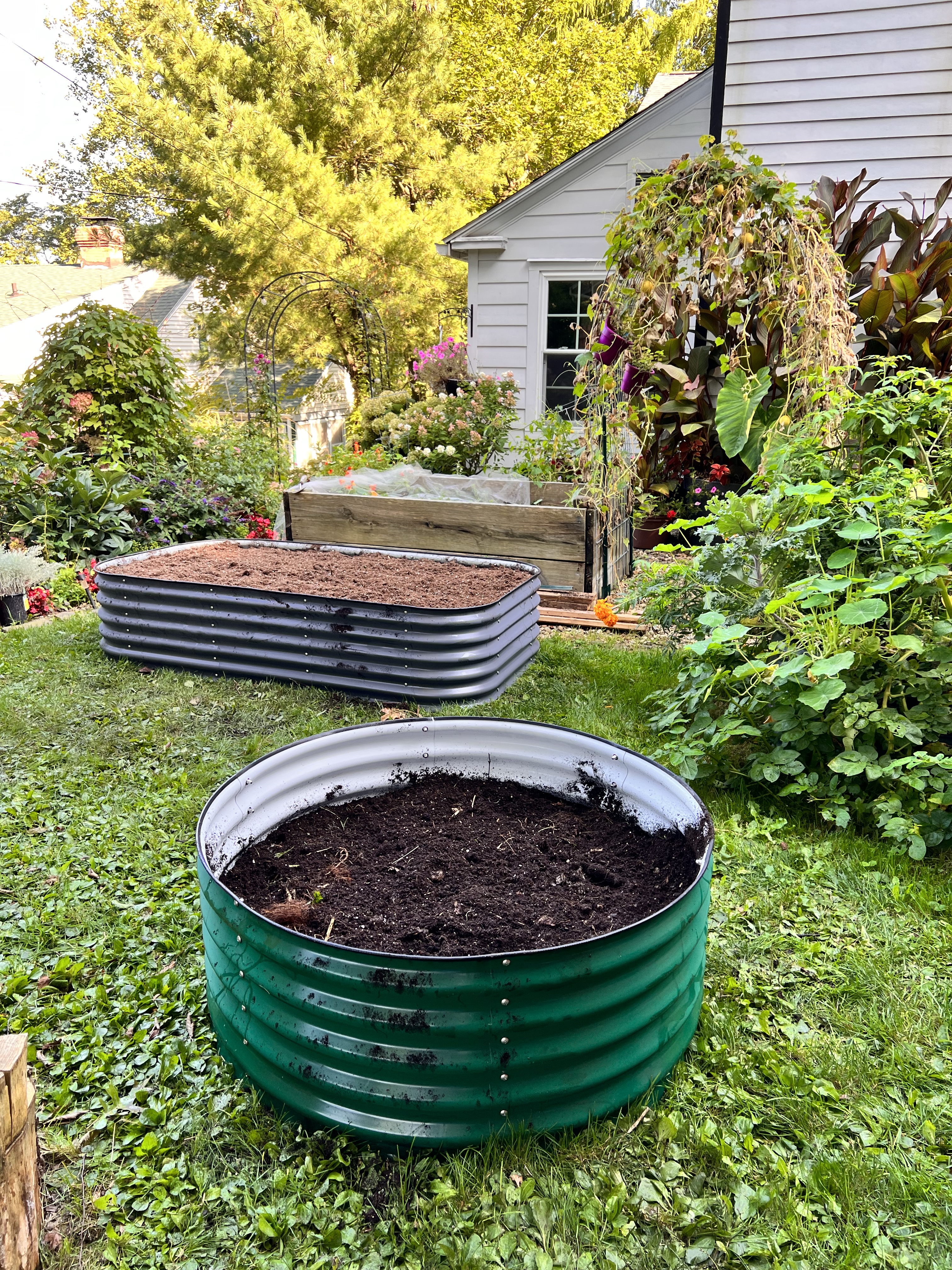




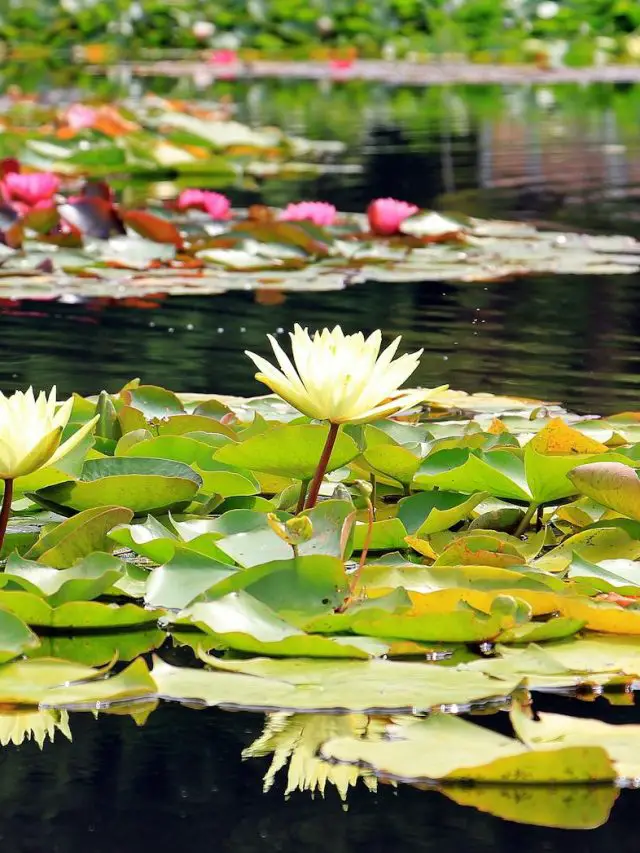
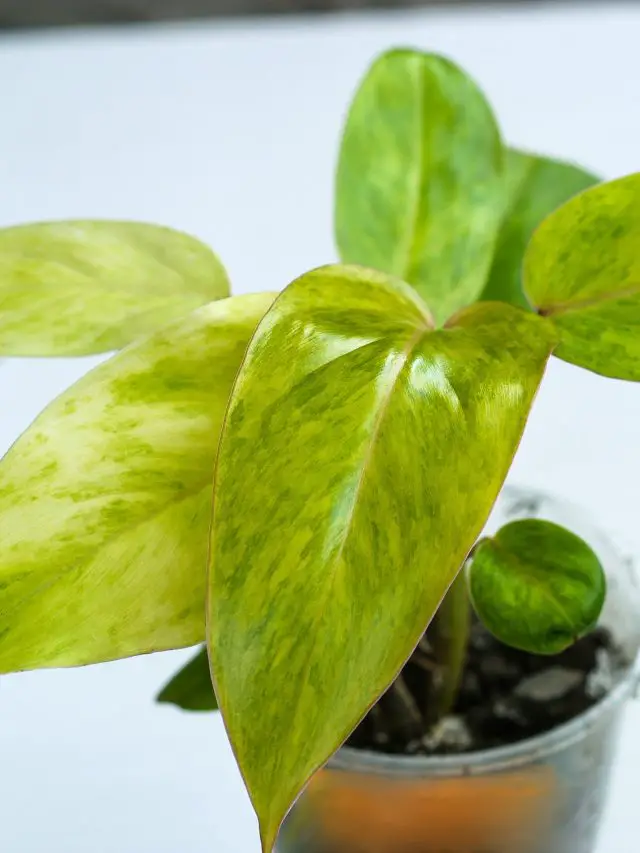

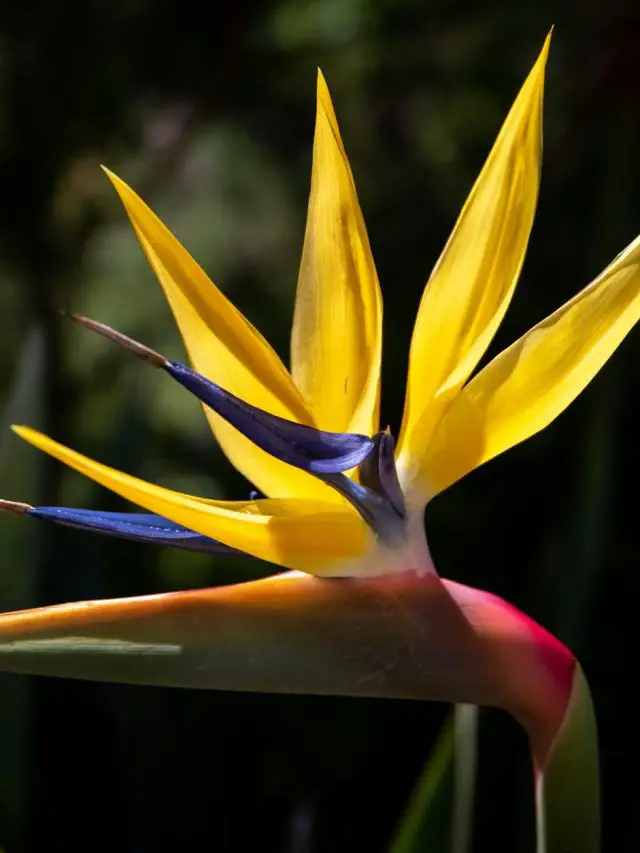
[…] How to make the best and easy ZZ Plant soil Mix […]
[…] Easy ZZ Plant Soil Mix Recipe […]
[…] ZZ Plant Soil Recipe […]
[…] How to Make the BEST ZZ Plant Soil Mix […]